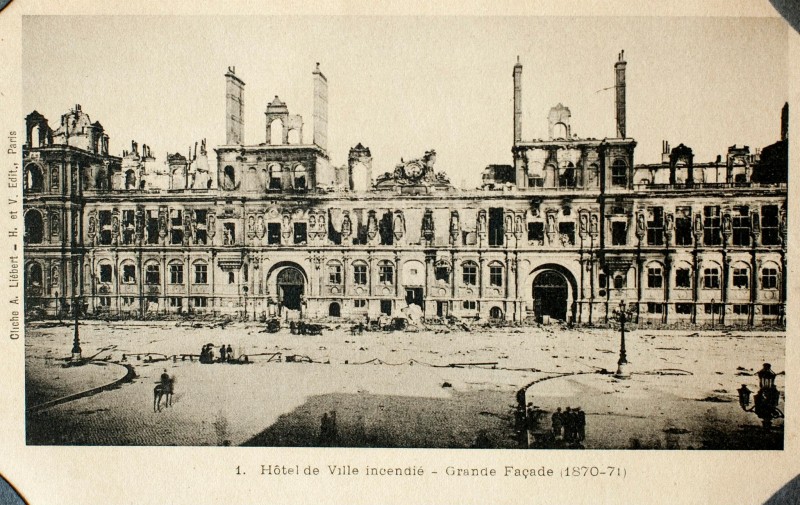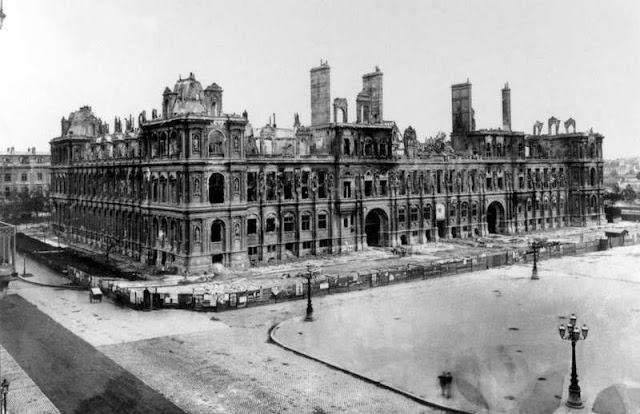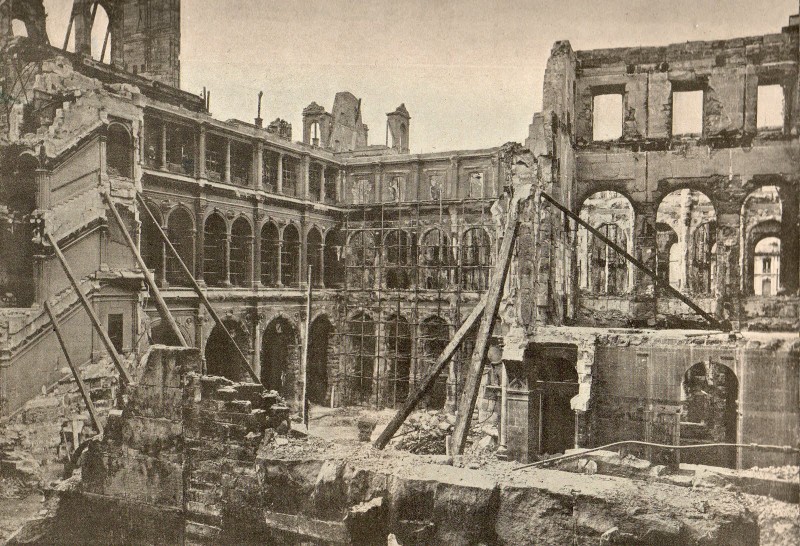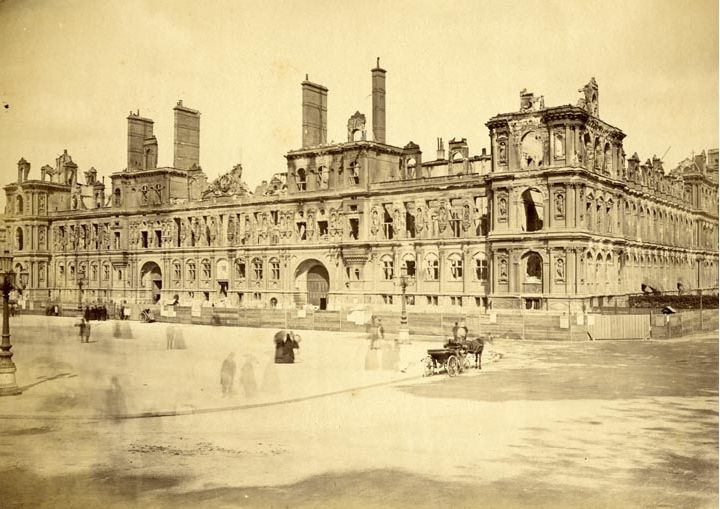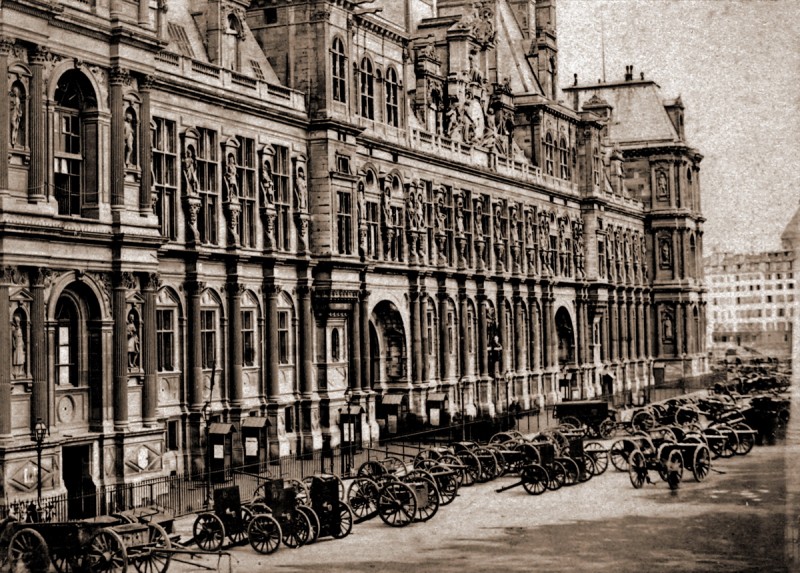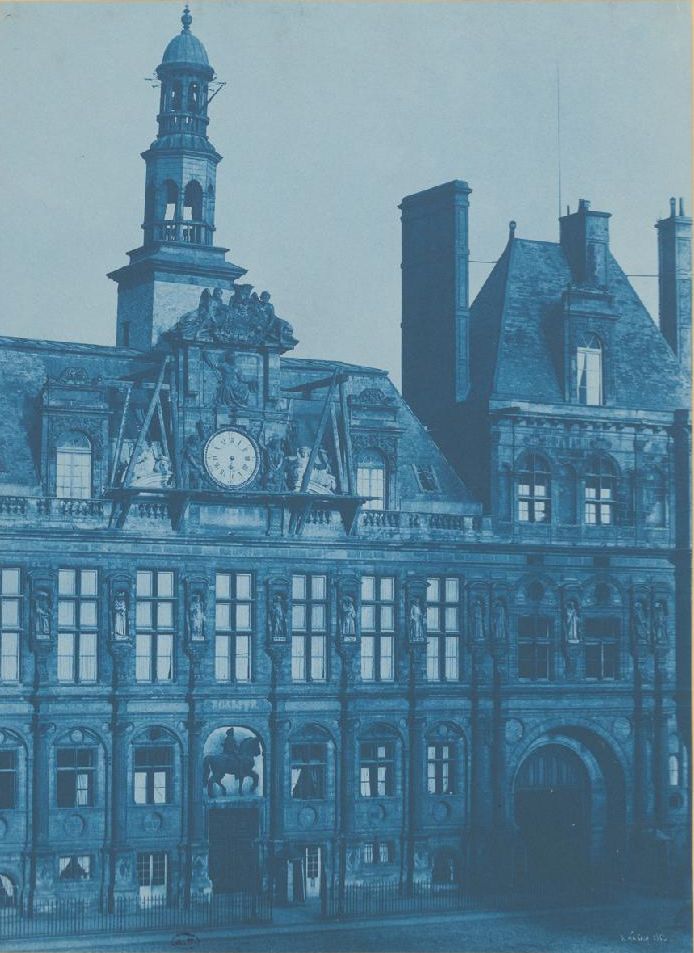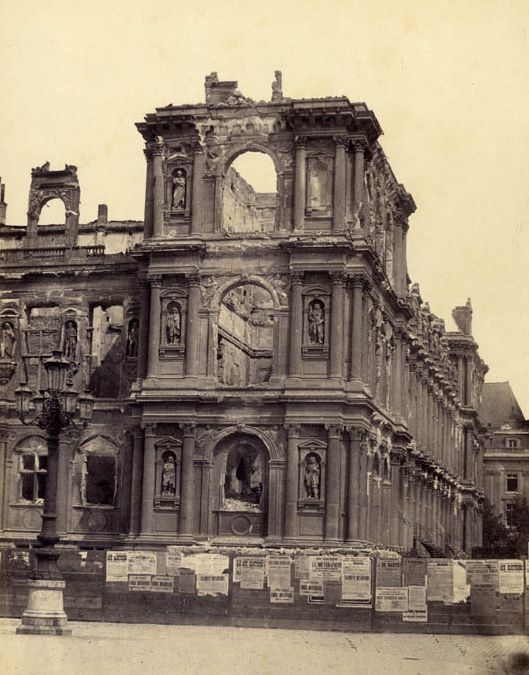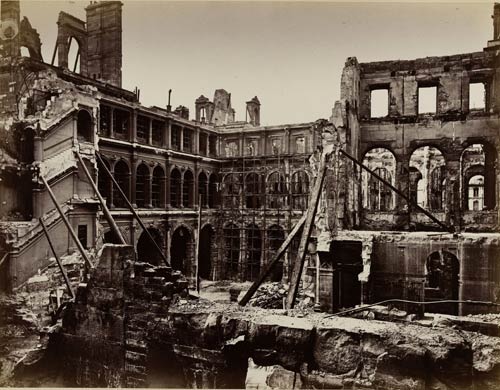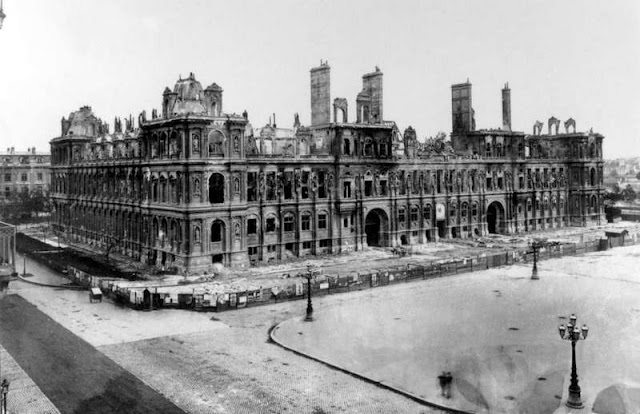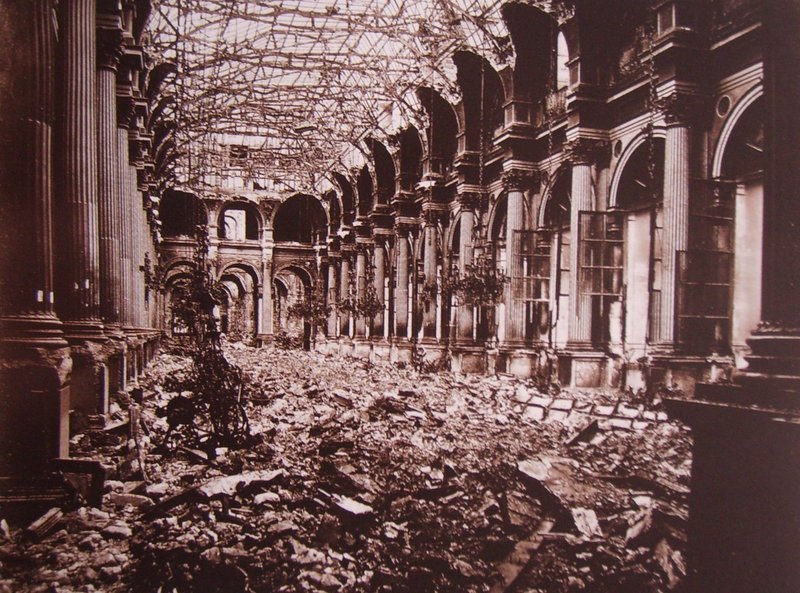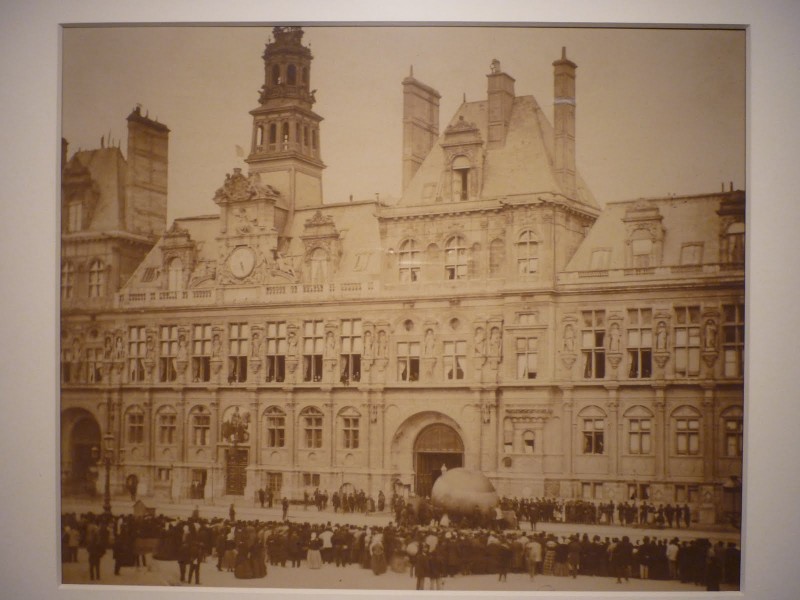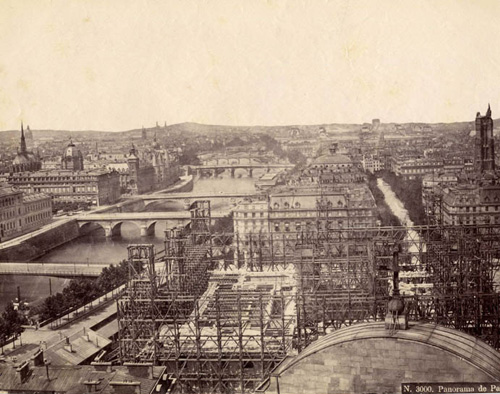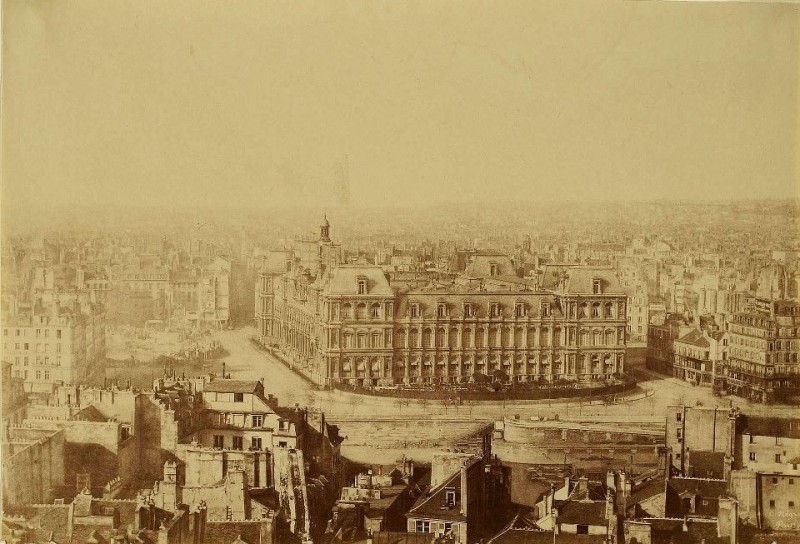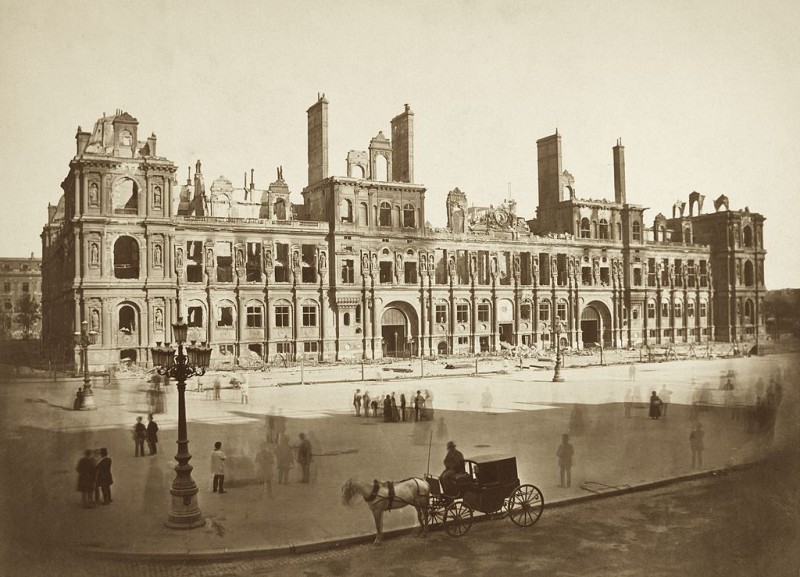
The original Hôtel de Ville (Paris’s City Hall) was erected on the site of the ‘Maison aux Pilliers’, a hub for municipal institutions which had been built in 1357 by Etienne Marcel. The new ‘palace’ was completed in 1628, under the reign of King Louis XIII, and quickly became an important political centre. It played host to the ‘Comité de Salut Public’ between 1792 and 1794 (literally ‘The Committee for Public Safety’, the defacto government during the Reign of Terror), as well as the provisional government installed after the fall of King Charles X in 1830, among many others. On the 28th of March 1871, following the defeat of Napoleon against Prussia, the people of Paris rose up against the regime and occupied the Hôtel de Ville. This marked the beginning of the Paris Commune, which was quickly crushed. During the notorious ‘semaine sanglante’ (‘week of blood’— the 22nd to the 28th of May), however, many great Parisian monuments were deliberately targeted by the insurgents, especially those which were perceived as symbols of state authority. Among these, of course, the Hôtel de Ville stood tall, and it was set ablaze on the 24th of May. Most of the building’s interior, including its vast archival collection, was lost in the fire. All record of civil registry in Paris prior to 1860, divided into two collections, was also lost forever: the first had been stored in the Hôtel de Ville, while second was kept in the Palais de Justice, also a victim of arson. The Hôtel de Ville was so badly damaged after the fire that its ruins were unsalvageable. The monument we see today, therefore, is entirely new – erected between 1874 and 1882.
(traduction: Tim McInerney)
LOCALISER / LOCATE
